Mesotherapy in Monterrey
Search and Compare the Best Clinics and Doctors at the Lowest Prices for Mesotherapy in Monterrey

Find the best clinics for Mesotherapy in Monterrey
With Medijump you can browse 1 facilities offering Mesotherapy procedures in Monterrey. The cheapest price available is $54 in Cancun. And for the cheapest price globally, prices start from $20 in Ukraine.
Mesotherapy in Mexico
Price: $ 54
Mesotherapy in Cancun
Price: $ 54
Ukraine offers the best prices Worldwide
Price: $ 20
Centro Dermatológico Giovanni Bojanini - Monterrey, can be found in Calle Ecuador, Monterrey, Mexico and offers its patients Mesotherapy procedures as well as 5 other procedures, across 2 different procedure categories. At present, there is no pricing information for Mesotherapy procedures at Centro Dermatológico Giovanni Bojanini - Monterrey. The pricing information is quite specialised, so it's only available on request, and the average price is around $54. Many medical professionals work at the Hospital, with 4 in total, and Centro Dermatológico Giovanni Bojanini - Monterrey has several accreditations, including: ISHRS - International Society of Hair Restoration SurgeryESHRS - European Society of Hair Restoration Surgery
Compare Before & After Photos of _procedure_photos.phpMesotherapy
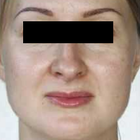
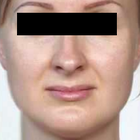
Front view
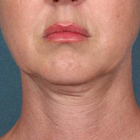
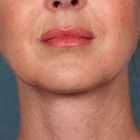
Front view
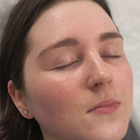
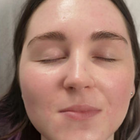
Front view
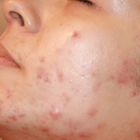
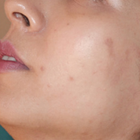
Half-side view
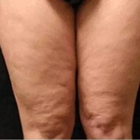
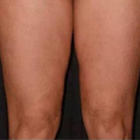
Front view
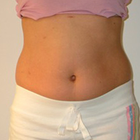

Front view
WHY US?
At Medijump, we're making medical easy. You can search, compare, discuss, and book your medical all in one place. We open the door to the best medical providers worldwide, saving you time and energy along the way, and it's all for FREE, no hidden fees, and no price markups guaranteed. So what are you waiting for?

Free

Best Price

Widest Selection

Risk-Free
What you need to know about Mesotherapy in Monterrey

Mesotherapy is a nonsurgical technique that uses micro-injections of vitamins, hormones, enzymes, and plant extracts. Its goal is to rejuvenate and tighten the skin. It is also used to reduce cellulite, lighten pigmented skin, fade wrinkles and line, treat alopecia and encourage hair growth, recontour the body, as well as to remove fat in areas such as the thighs, stomach, buttocks, legs, hips, face, and arms.
Very fine needles are used to deliver a series of injections into the middle layer of the skin. These injections are believed to correct underlying issues, such as inflammation and poor circulation, which cause skin damage.
Before mesotherapy, you may have problems like stubborn fat in certain areas of the body, wrinkles and fine lines in the face, pigmented skin, etc. After the procedure, you’re dull and tired-looking skin will be improved, superficial wrinkles will fade, and excess fat will be reduced. If you undergo the procedure to treat alopecia, you can also expect the procedure to promote hair growth.
What does a Mesotherapy Procedure Involve?
While mesotherapy is nonsurgical and not painful, it can be slightly uncomfortable. Therefore, you may have anesthetic cream applied to your skin to numb the affected area.
Using a special short needle, you will get a series of injections. The injections can be carried out on the face, neck, scalp, chest, hands, and other areas of the body that may have problems you wish to address. There is not a standard formula for the substances injected. The practitioner may use a combination of different substances, including vitamins and minerals, enzymes (such as hyaluronidase and collagenase), herbal extracts, hormones (such as thyroxin and calcitonin), as well as prescription medicines (such as antibiotics and vasodilators). The substances used depends on what you want to treat. For instance, the treatment for cellulite and body fat reduction may use lecithin and isoproterenol.
Each injection can be given at different depths into your skin, ranging between 1 and 4 millimeters, depending on the condition you want to treat. The practitioner may flick their wrist at a rapid pace while injecting, or place the needle into your skin at an angle.
How Long Should I Stay in Monterrey for a Mesotherapy Procedure?
Mesotherapy is an outpatient procedure, so you can leave the hospital on the same day. You should be able to leave Monterrey right away, but it is recommended to wait at least a day before you travel home because you need to wait for the substances to settle down. However, since you may need a series of treatment to get the desired results, you should expect to return to the clinic or hospital between 3 to 15 times, with 7 to 14 days intervals. Therefore, the length of stay depends on how many sessions you will need until you achieve the result you wish for.
What's the Recovery Time for Mesotherapy Procedures in Monterrey?
Mesotherapy has minimal downtime. You may experience a little bruising and swelling after the procedure, but they will subside within 24 hours. Some people are able to return to work and your normal activities on the same day, while others may need to take a day off due to pain and swelling.
What sort of Aftercare is Required for Mesotherapy Procedures in Monterrey?
No special aftercare is needed, but the practitioner may give you instructions to follow, which may include what you should do to avoid complications and to reduce swelling and bruising. You can have maintenance treatments 1 – 2 times a year.
To maintain the results, particularly if you have mesotherapy to reduce signs of aging and eliminate excess fat, make sure you exercise regularly, follow a well-balanced diet plan, and limit your alcohol intake.
What's the Success Rate of Mesotherapy Procedures in Monterrey?
While there is proof showing that there can be some improvement after mesotherapy, more studies and research are needed to verify the mechanism, safety, and effectiveness of the procedure. Therefore, you should always choose a licensed practitioner with proven track records and experience if you do want to try the procedure.
According to those who practice mesotherapy, the risks tend to be minimal if you go to an experienced and trained practitioner. The side effects and risks of mesotherapy may include pain, nausea, sensitivity, bumps, swelling, bruising, itching, dark patches of the skin, redness, rash, scars, and infection.
Are there Alternatives to Mesotherapy Procedures in Monterrey?
The alternative to mesotherapy depends on the condition you want to treat, which may include:
- Injection lipolysis – mesotherapy and injection lipolysis are often thought to be the same procedure, but they are actually two different procedures. Injection lipolysis involves the injection of deoxycholate and phosphatidylcholine into the fat layer under the skin to break up fat.
- Liposuction – is one of the most popular cosmetic treatments to remove excess fat. It uses a suction technique to eliminate fat from specific areas of the body.
- Botox and dermal fillers – both Botox and dermal fillers are nonsurgical treatments to rejuvenate the skin. Botox works by blocking nerve contraction to relax wrinkles, while dermal fillers can improve skin contouring.
Whilst the information presented here has been accurately sourced and verified by a medical professional for its accuracy, it is still advised to consult with your doctor before pursuing a medical treatment at one of the listed medical providers
No Time?
Tell us what you're looking for and we'll reachout to the top clinics all at once
Enquire Now

Popular Procedures in Monterrey
Prices Start From $85

Prices Start From $167

Prices Start From $120

Prices Start From $931

Prices Start From $76

Prices Start From $5

Prices Start From $236

Recommended Medical Centers in Monterrey for Mesotherapy

- Interpreter services
- Translation service
- Religious facilities
- Medical records transfer
- Medical travel insurance
- Health insurance coordination
- TV in the room
- Safe in the room
- Phone in the room
- Private rooms for patients available

- Interpreter services
- Translation service
- Religious facilities
- Medical records transfer
- Medical travel insurance
- Health insurance coordination
- TV in the room
- Safe in the room
- Phone in the room
- Private rooms for patients available

- Interpreter services
- Translation service
- Religious facilities
- Medical records transfer
- Medical travel insurance
- Health insurance coordination
- TV in the room
- Safe in the room
- Phone in the room
- Private rooms for patients available

- Interpreter services
- Translation service
- Religious facilities
- Medical records transfer
- Medical travel insurance
- Health insurance coordination
- TV in the room
- Safe in the room
- Phone in the room
- Private rooms for patients available
Mesotherapy in and around Monterrey
About Monterrey
Nuevo León, a northeastern state in Mexico, takes pride in its capital, Monterrey, a major financial hub for the nation. Serving as a manufacturing and industrial center, Monterrey is also home to a plethora of large Mexican and international businesses. With an impressive GDP (PPP) amounting to US$ 123 billion, it holds the distinction of being the second-most productive city in Mexico. Additionally, its population marking of 5 million residents simultaneously places it as the country's third-most populous city.
Monterrey has successfully carved out a reputation in the tourism sector, particularly drawing global attention as a favored destination for medical tourism. The underlying factors for this growing attraction can be attributed to the following reasons:
- The healthcare industry, banking, and telecommunication are the pillars of the City’s economy.
- The City has some acclaimed hospitals that offer cutting edge treatments. Most hospitals have JCI accreditation, a certification that ensures safety and quality across the healthcare industry.
- Low prices and above-average quality of medical care are the two main reasons that attract medical tourist attention.
- Proximity to the US also provides a big advantage to patients and tourists from the United States of America.
- The most popular procedures are breast augmentation and liposuction and are performed at Dr. Sauceda Plastic Surgery, Dr. Alvar Garcia Plastic Surgery Monterrey, and Dr. David Kirsch M.D. Cosmetic Surgery
Popular Areas in Monterrey
-
The Macroplaza is the largest park in Mexico and is surrounded by many historical buildings and museums. It is a popular spot for locals and tourists alike to relax and enjoy the outdoors.
-
Fundidora Park is a heritage museum and public park that was once home to a steel mill. Today, the park is a popular destination for families and tourists alike, with a variety of attractions including a museum, a zoo, and an amusement park.
-
The Museum of Modern Art displays the works of Ricardo Mazal, Antony Gormley, and Jenny Holzer. The museum is noted for its sculpture yard and restaurant.
-
Cerro de la Silla, Is popular for its great urban hiking trail up the tall mountain for its fantastic view of Monterrey and the surrounding areas.
-
Cerro del Obispado is a historical site that houses a museum and offers panoramic views of the city. It is a popular spot for tourists and locals alike to learn about the history of Monterrey and enjoy the views.
-
To get a glimpse of a traditional wrestling match, Coliseo is the place to be. If you are lucky and brave enough, then you may even get to see a traditional bullfight.
Weather and Climate in Monterrey
It has a dry climate and is one of the hottest cities in Mexico, winters tend to be moderate, while summers can reach high levels of heat. The hot season, which spans from May to September, is often accompanied by rainfall. For the rest of the year, the climate remains mild with relatively minimal temperate fluctuations, and there's hardly any rain during the cold season.
Monterrey can exhibit drastic shifts in its weather scenarios. For instance, a sudden shower during the summer can cool the temperatures down significantly. Conversely, the winter season might witness balmy temperatures in the absence of city-crossing winds. Instances of ice, snow, and sleet are quite the rarity in this region.
Getting around in Monterrey
In Monterrey, there are primarily two airports dedicated to catering a variety of air traffic. The main airport used for commercial flights is Monterrey International Airport. The secondary airport, comparatively smaller, primarily serves private and cargo aircraft traffic. Monterrey International Airport efficiently accommodates a mix of both international as well as domestic travel audiences.
American, United, Delta, and Copa are some of the international airlines that connect it to Houston, Los Angeles, Atlanta, Chicago, Detroit, Dallas, Las Vegas, San Antonio, etc. People can travel to the nearby Mexican cities of Guadalajara, Mexico City, Cancun, Mazatlan, Puerto Vallarta, and Tijuana using Interjet, Aeromar, Magnicharters, and Volaris. At the same time Interjet, Aeromexico, and Viva Aerobus cater to both domestic and international travelers.
Monterrey houses the largest bus terminal in the northern region of Mexico, offering a significant connectivity advantage. Individuals can travel to and from Monterrey and various other bus stations dispersed across Mexico and the US using trans-border buses. Given Monterrey’s closeness to the US-Mexico border, a car ride from the US is another feasible transportation choice.
Moving around within the city is quite feasible and straightforward. Although efficient, the subway system's coverage is relatively limited. The optimum choice for commuting is the taxi service, which may come with a slightly higher cost compared to bus rides. It's advisable to request the driver to go by the meter to guarantee fair charges.
Tourist Visas in Monterrey
Citizens of 67 countries, including Australia, Canada, Schengen countries, the USA, the UK, and Japan, do not need a tourist visa to visit Monterrey, Mexico, for up to 180 days, as long as their trip does not provide any monetary benefit to them. People who have a valid visa to the US and PR in Canada also do not need a separate visa to enter Mexico. The exemption is available to many countries in South America and the Caribbean Islands also. You can check your eligibility on the official website of the Mexican government.
Citizens of other countries will need to obtain a tourist visa to visit Monterrey, Mexico. The tourist visa is valid for six months from the date of entry. You can apply for a visa at the Mexican consulate in your country.
Required documents for a tourist visa:
- Valid passport with at least six months of validity remaining beyond your planned date of departure from Mexico.
- Visa application form.
- Two passport-sized photos.
- Proof of onward travel, such as a return flight ticket.
- Proof of financial resources, such as a bank statement or credit card statement.
- Visa processing fee.
Additional Information
- The local currency used in Monterrey, Mexico, is the Mexican peso (MXN). The exchange rate for the Mexican peso fluctuates daily, but it is currently trading between 20 and 21 Mexican pesos to the euro and 18 to 19 Mexican pesos to the US dollar.
- You can use a credit card for payment at big stores, hospitals, and restaurants. Smaller merchants and establishments may not accept credit cards. Therefore, it is better to carry some local currency. You can also use the ATMs available in the city to withdraw local currency. The use of cards may involve certain transaction charges. Tipping is not compulsory. However, people appreciate some form of tipping; somewhere between 10 to 15 % of the total bill is the norm. Porters also get tipped, say, 10 pesos per bag.
- Mexico Spanish or Castilian Spanish is the main language here. Locals can also communicate in English as well. It would still be an advantage if you can say some basic phrases in Spanish.
- The majority of the people living in Monterrey are Christians.
- Mexicans observe holidays on Christian festivals and some national holidays. Christmas and New Year’s Day are the two main public holidays. Independence Day on 16th September and Revolution day on the third Monday of November are the two main national holidays. Apart from this, there are many other holidays.
Popular Searches
- Plastic Surgery in Thailand
- Dental Implants in Thailand
- Hair Transplant in Thailand
- Breast Augmentation Thailand
- Gastric Sleeve in Thailand
- Gender Reassignment Surgery in Thailand
- Laser Hair Removal in Bangkok
- Botox in Bangkok
- Dermatology in Bangkok
- Breast Augmentation in Bangkok
- Coolsculpting in Bangkok
- Veneers in Turkey
- Hair Transplant in Turkey
- Rhinoplasty in Turkey
- Stem Cell Therapy in Mexico
- Rhinoplasty in Mexico
- Liposuction in Mexico
- Coolsculpting in Tijuana
- Rhinoplasty in Korea
- Scar Removal in Korea
- Gastric Sleeve in Turkey
- Bone Marrow Transplant in India
- Invisalign in Malaysia
- Plastic Surgery in the Dominican Republic
- Tummy Tuck in the Dominican Republic
- Plastic and Cosmetic Surgery in Poland
- Rhinoplasty in Poland
- Hair Implant in Poland
- Dental Implants in Poland
- IVF in Turkey